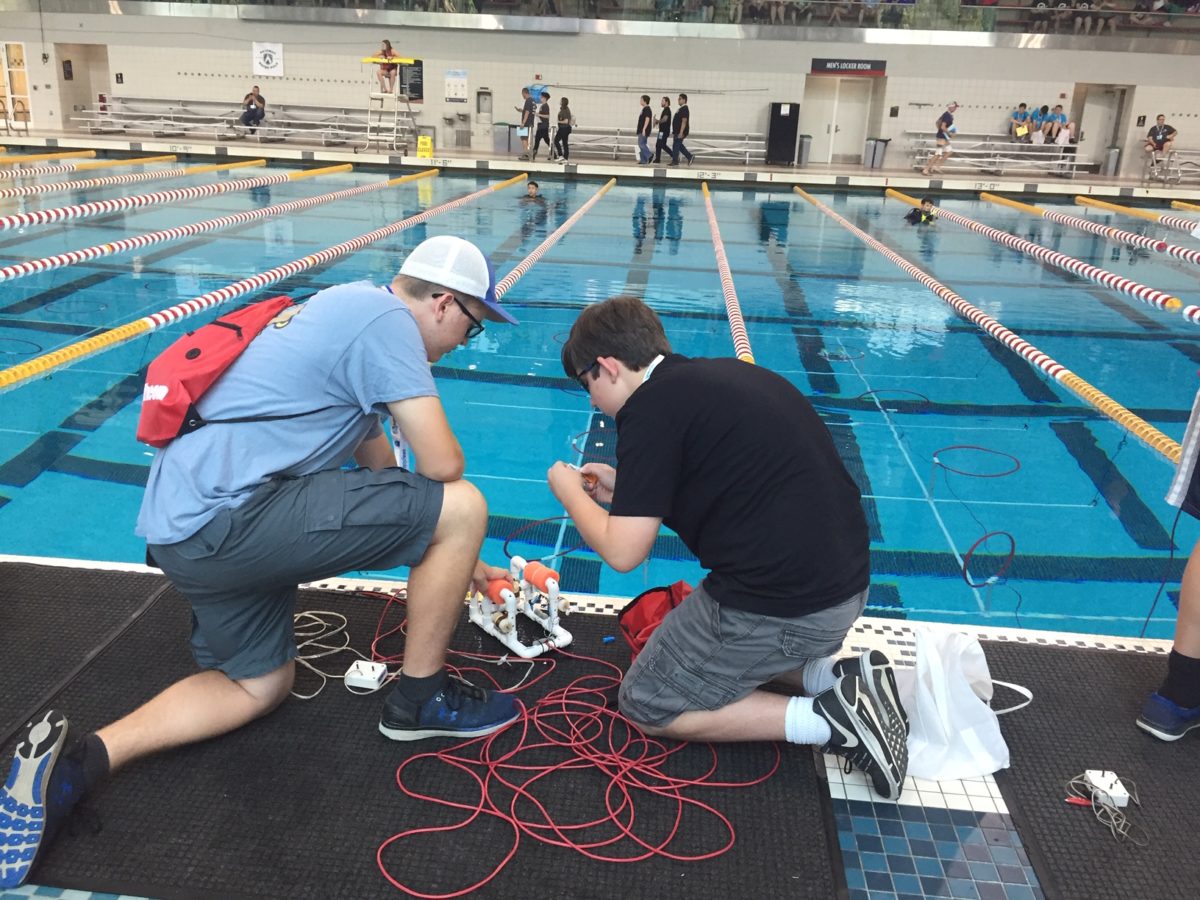Families and participants of the SeaPerch Challenge 2019 competition sat on the bleachers inside of the Eppley Recreation Center pool at the University of Maryland College Park last weekend, waiting in anticipation for the winners to be announced.
Over 1,000 students, making up 199 teams, competed in this year’s two-day national marine robotics event, organized by Robonation. Participants came from all over the United States as well as from the U.S. Virgin Islands, British Virgin Islands, and New Zealand.
The competition included participants from late elementary school through high school. Groups were divided into three award categories: middle school stock class, high school stock class, and open class, which had both middle school and high school students.
Each group had to build their own Remotely Operated Vehicle (ROV) from a kit provided by Robonation. Teams were allocated an extra $25 to add any additional improvements to the robot. The open class division was the only exception, as teams in that category had an unlimited budget for adding additional elements to their ROVs to boost performance.
“What’s kind of cool about the competition is that students get exposed to many different skillsets – learning about new technology, how to build and design, and also, managing finances, their teams, and their time,” said Samantha Sullivan, community relations manager at Raytheon, the sponsor of this year’s SeaPerch Challenge event. “It’s a great program that teaches kids how to maneuver life skills and hopefully exposes them to a skillset that carries into a future career.”
The teams put their robots to three tests. The first challenge was before the event, and required teams to submit their engineering process to be judged against a specific rubric. The second challenge was an obstacle course at the bottom of the Eppley pool. The obstacle course was made out of hoops facing in different directions. Each team’s ROV had to get through the underwater obstacle course, and scoring was based on the time that it took the robot to maneuver through. The next challenge, called “rescue and recovery,” required each team’s ROV to retrieve miscellaneous parts of a disassembled robot and move these parts to a designated area.

In order to be competitive during the challenges, teams had to figure out creative ways of modifying their ROV. Certain techniques included creating smaller ROVs to make them quicker during the timed obstacle course, or changing certain elements of the robot for it to be more effective during the recovery course.
“This year we had the hook, we modified it for the recovery course,” said Jay Cruz, who competed with his team the Tiger Kings in the high school division. “We used PVC; we cut it, we sawed off a notch at the end of it and used it during the competition.”
The youngest team taking part in the challenge, the STINGRAYS, consisted of three elementary school students from Pearland, Texas. This was the team’s second year competing, but definitely not their last.
“All three of them have a very competitive spirit, and we didn’t have to push them. We actually had to calm them down a little bit – the competitive part – for them to learn instead of compete,” said Sam Lang, a parent of one of the students. “We explained to them that the first years would be hard, where you actually have to learn, and later on, they can actually compete.”
“At the regionals, they outcompeted middle school kids, so I always tell them that they earned their spot,” Lang continued. “It’s a lot of work, it requires a lot of patience, but it is an amazing introduction to the kids to get them into STEM and encourage them and tell them that this is the future.”
According to data provided by Robonation, 48 percent of participants were in the middle school stock division, 42 percent participated in the high school stock division, and 10 percent were in the open class division.
This was the ninth-year anniversary of SeaPerch, and there are plans for the annual challenge to continue.







